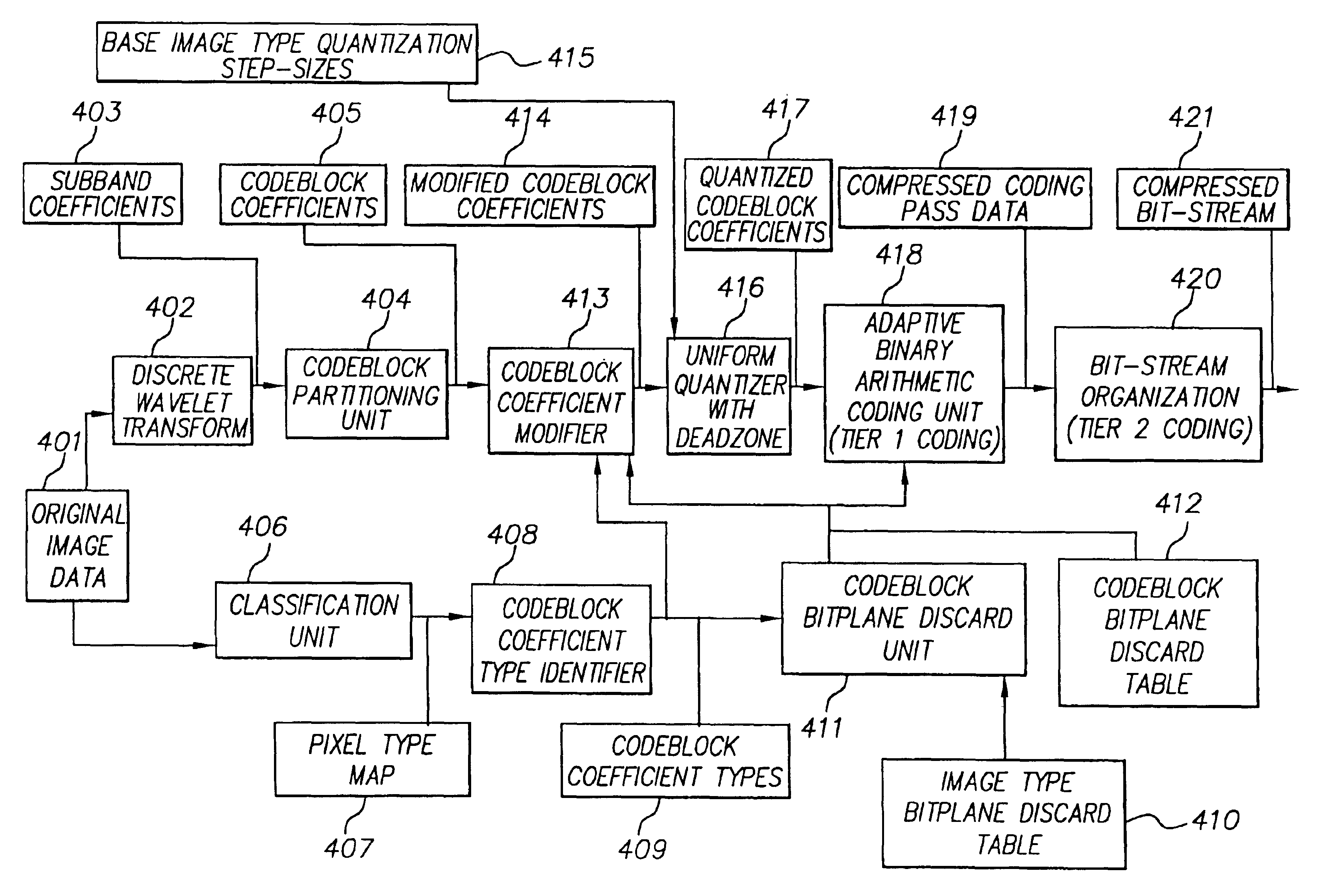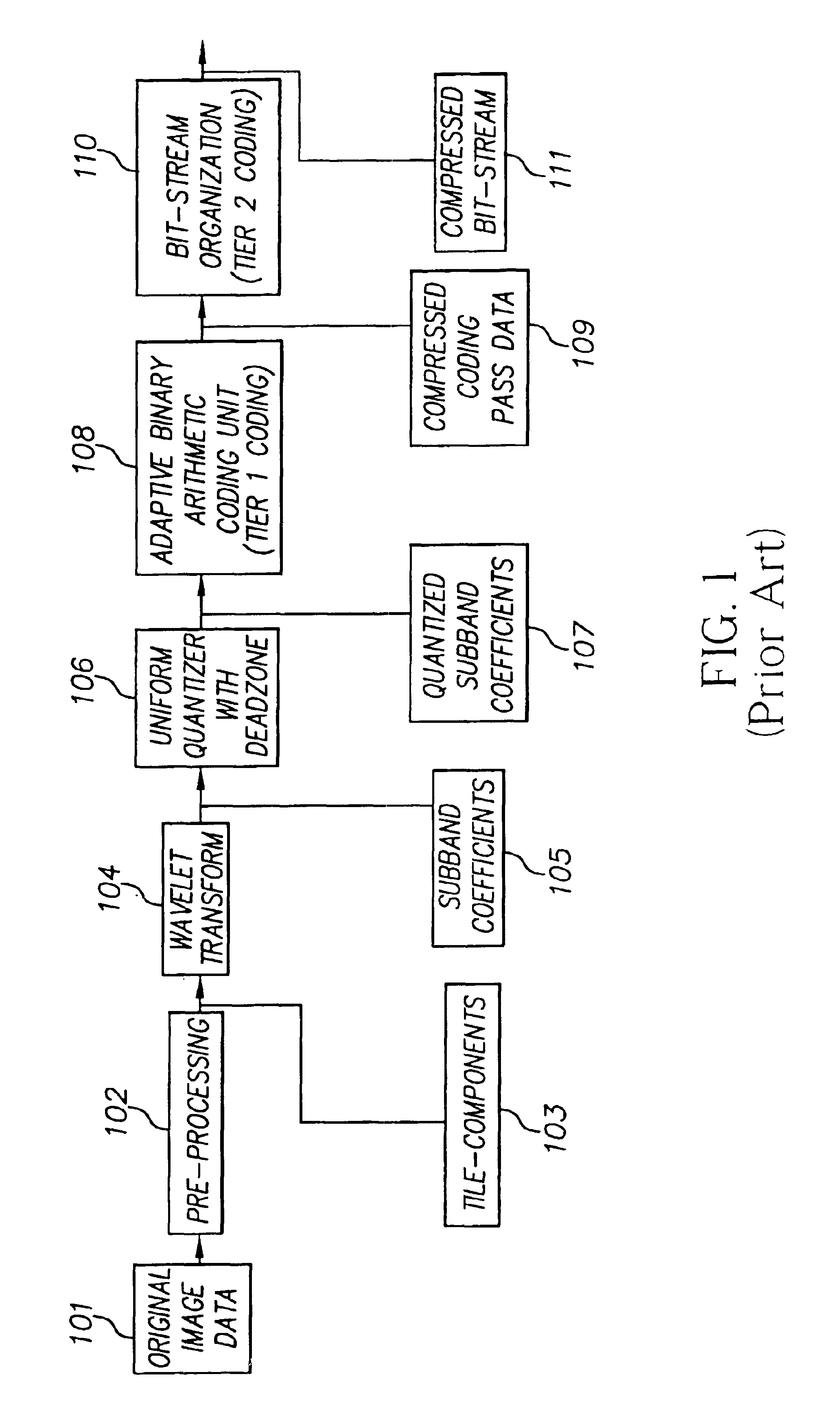Digital image compression utilizing shrinkage of subband coefficients
a subband coefficient and digital image technology, applied in the field of image compression, can solve the problems of text regions that are not encoded with sufficient fidelity, suffer visual artifacts, textual visual artifacts, and granular classification
- Summary
- Abstract
- Description
- Claims
- Application Information
AI Technical Summary
Benefits of technology
Problems solved by technology
Method used
Image
Examples
Embodiment Construction
The invention relates to digital image compression. The invention is generally described herein in relation to embodiments compliant with the JPEG2000 image compression standard, but is not limited to such embodiments, or that standard. The present description details particular features forming part of, or cooperating with, a particular algorithm in accordance with the present invention. Attributes not specifically shown or described herein can be selected from those described above in relation to JPEG2000, in “Information Technology—JPEG2000 Image Coding System, ISO / IEC International Standard 15444-1, ITU Recommendation T.800”, or otherwise known in the art. In the following description, a particular embodiment of the present invention would ordinarily be implemented using a software program, although those skilled in the art will readily recognize that the equivalent of such software can also be constructed in hardware or a combination of software and hardware. Given the disclosu...
PUM
 Login to View More
Login to View More Abstract
Description
Claims
Application Information
 Login to View More
Login to View More - R&D
- Intellectual Property
- Life Sciences
- Materials
- Tech Scout
- Unparalleled Data Quality
- Higher Quality Content
- 60% Fewer Hallucinations
Browse by: Latest US Patents, China's latest patents, Technical Efficacy Thesaurus, Application Domain, Technology Topic, Popular Technical Reports.
© 2025 PatSnap. All rights reserved.Legal|Privacy policy|Modern Slavery Act Transparency Statement|Sitemap|About US| Contact US: help@patsnap.com



